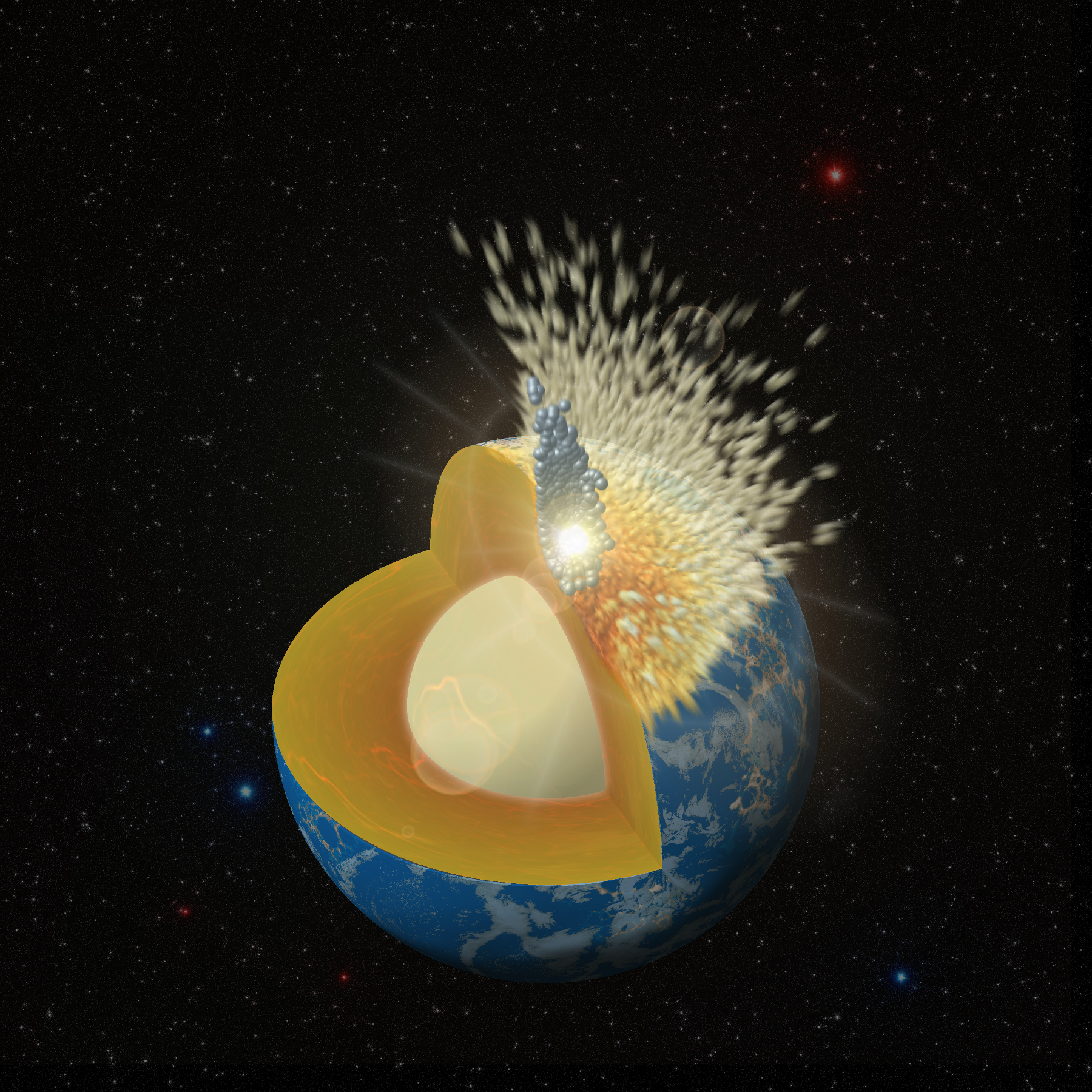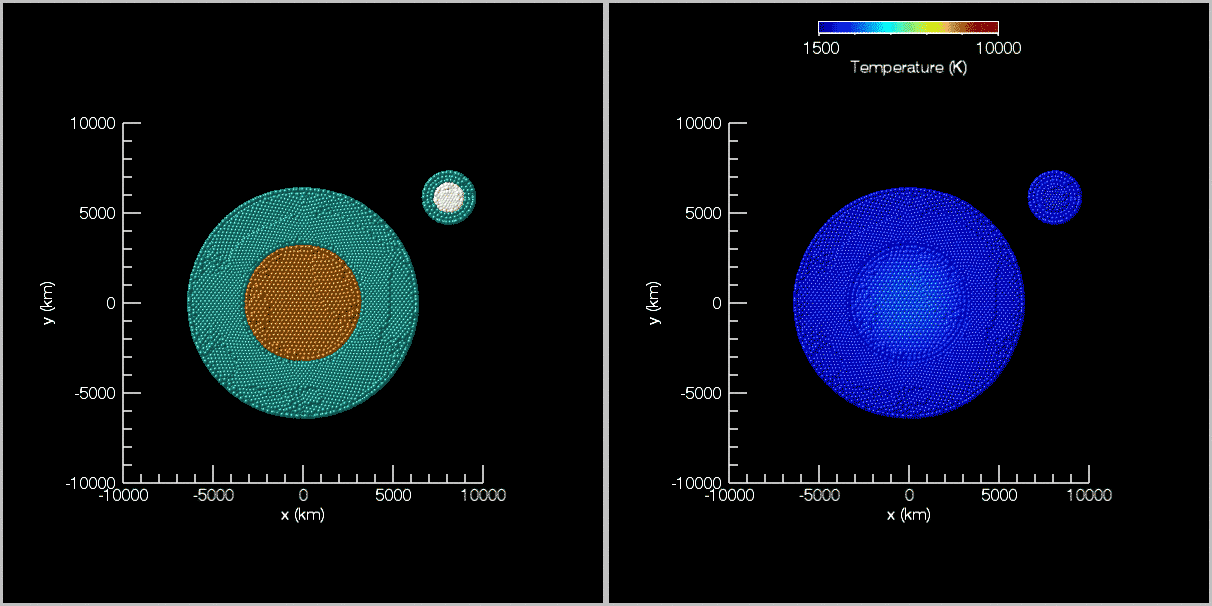Early Earth Took a Heavy Beating After the Moon Was Formed

Earth may have been bruised by the impact of more than one moon-size object early in its life.
New simulations suggest that much of the material that crashed into our young planet may have been swallowed up by Earth's core or ricocheted back into space, requiring more collisions to leave the elemental signatures scientists see in the crust today.
The young solar system was a violent place. Planetesimals, the massive objects that didn't quite manage to grow into planets, wound up destroying themselves as they crashed into other objects during a period known as late accretion. These collisions left traces of highly siderophile elements — metals have an affinity for iron, such as gold, platinum and iridium— within our planet's mantle. [How the Moon Formed: 5 Wild Theories]
By measuring how much of these metals was mixed into the mantle, scientists estimated that about half a percent of the Earth's present mass came from colliding planetesimals. But these estimates assumed that the mantle held onto all of the highly siderophile elements.
New simulations suggest that instead, some of the material might have been carried all the way into the core, where it would have mixed up or would have been thrown out of the system entirely. Both outcomes would have reduced the amount of metals that would have mixed into the mantle. That means Earth may have absorbed two to five times as many impacts as previously thought.

"We modeled the massive collisions and how metals and silicates were integrated into Earth during this 'late accretion stage,' which lasted for hundreds of millions of years after the Moon formed," Simone Marchi, a researcher at the Southwest Research Institute (SwRI) in Colorado and lead author of a Nature Geoscience paper outlining these results, said in a statement. Marchi worked with Robin Canup, also at SwRI, and Richard Walker, a geologist at the University of Maryland.
"Based on our simulations, the late-accretion mass delivered to Earth may be significantly greater than previously thought, with important consequences for the earliest evolution of our planet," Marchi said.
Get the Space.com Newsletter
Breaking space news, the latest updates on rocket launches, skywatching events and more!
Follow Nola Taylor Redd at @NolaTRedd, Facebook, or Google+. Follow us at @Spacedotcom, Facebook or Google+. Originally published on Space.com.
Join our Space Forums to keep talking space on the latest missions, night sky and more! And if you have a news tip, correction or comment, let us know at: community@space.com.

Nola Taylor Tillman is a contributing writer for Space.com. She loves all things space and astronomy-related, and enjoys the opportunity to learn more. She has a Bachelor’s degree in English and Astrophysics from Agnes Scott college and served as an intern at Sky & Telescope magazine. In her free time, she homeschools her four children. Follow her on Twitter at @NolaTRedd









